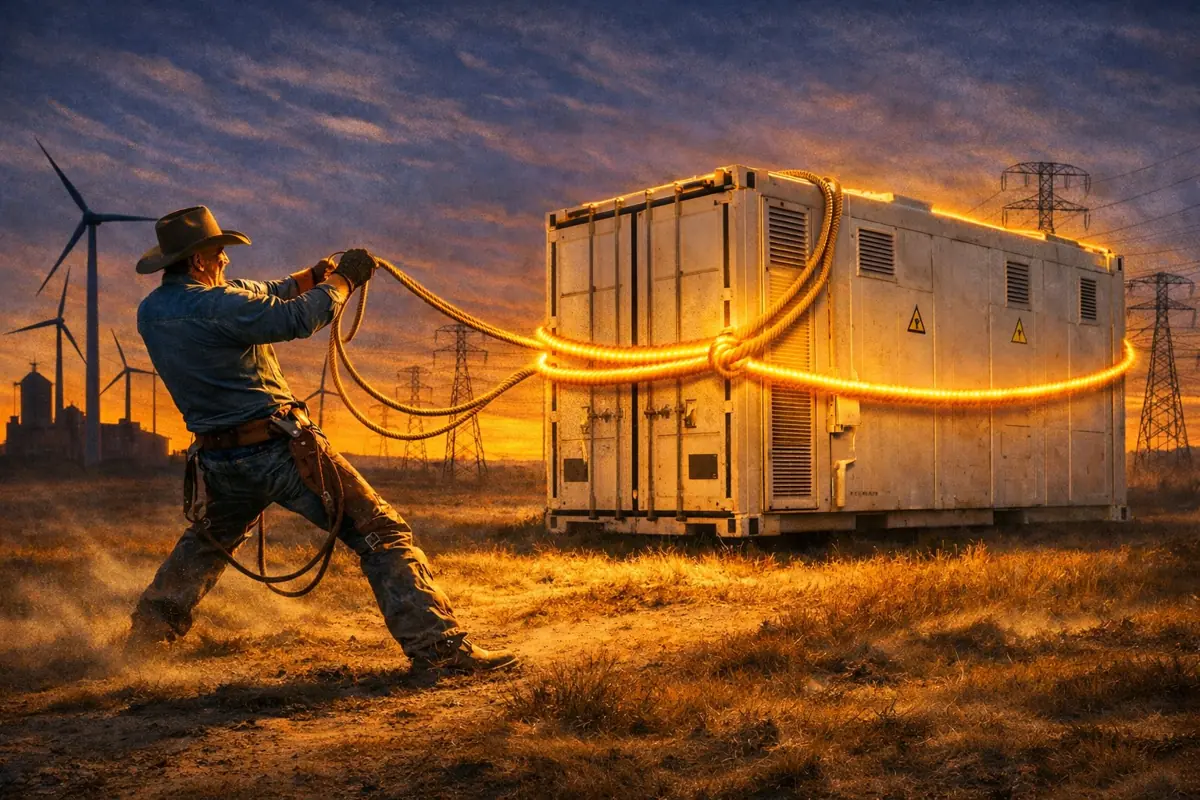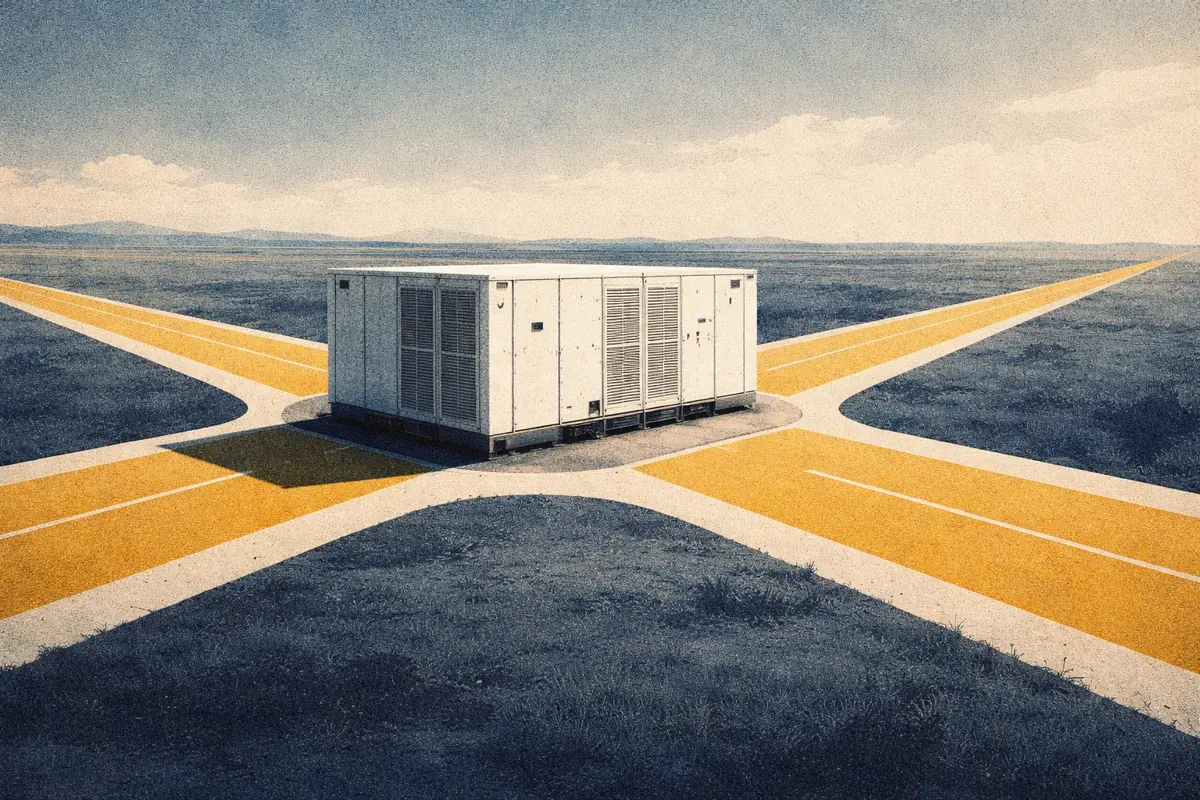GB BESS: the five headlines from Q1 2024
Q1 2024 was challenging for market participants with operational battery energy storage systems in Great Britain. However, there were the beginnings of improvements that point towards a brighter rest of the year. Recovering price spreads, increased Balancing Mechanism dispatches, and more options for innovative revenue stacking enabled operators to distinguish themselves from the pack.
Here’s the main headlines from January to March 2024.
1) Battery revenues hit record lows
The Modo GB BESS Index reported £25,380/MW/year in Q1 2024 (excluding Capacity Market revenues). Battery duration and Balancing Mechanism registration status directed the chosen optimization strategy for navigating the challenging market conditions.

- 2-hour duration systems favored a wholesale, Dynamic Regulation High, and Balancing Mechanism strategy.
- 1-hour systems continued to focus mainly on a Dynamic Containment and wholesale trading strategy.
- The 2-hour premium vs. 1-hour fell to just £7k/MW/year, or 35%, in February.
- Non-Balancing Mechanism registered systems (not covered under ABSVD) capitalized on high Dynamic Regulation Low prices.
2) Average price spreads in winter 2023/24 were 57% lower than winter 2022/23
Low peak demand, increased wind generation, and greater interconnector imports dampened wholesale volatility this winter. This was combined with a drop in base spread due to lower gas and carbon prices, resulting in the lowest winter price spreads for five years. Read more on this here.

- These spreads reflect the current transition period where increased renewable generation and storage compete with existing gas generation capacity.
- Next winter could look similar with little capacity changes aside from the retirement of the Ratcliffe-upon-Soar coal power station.
- As gas-fired assets begin to retire and renewable capacity and demand grow, we expect valuable trading opportunities to return.
3) Increased solar generation and Balancing Reserve launch rejuvenate battery revenues
Revenues started to rebound in March as day-ahead wholesale price spreads increased towards the latter part of the month. This trend has continued into the start of Q2. Meanwhile the new Balancing Reserve product launched on March 13th, also providing a boost.

- The start of spring and sunnier days led to decreased wholesale prices across midday, increasing the opportunity to perform two wholesale trading cycles. You can read more on this here.
- 2-hour systems have also been topping up their revenue stack with the newly launched Balancing Reserve.
- Only 400 MW is currently being procured, but if the ESO increases, the service could begin to cause increased volatility in the wholesale market.
4) Batteries are receiving 5x more Balancing Mechanism instructions with bulk dispatch
Since the relaunch of bulk dispatch on January 8th, 2024, the Open Balancing Platform has proven to improve technical dispatch capability. This did not result in a significant improvement in revenues by the end of the quarter, but increasing volume is positive for future revenue growth.

- Batteries saw a 47% increase in weekly dispatch volume after bulk dispatch, rising from 2.2 MWh/MW to 3.6 MWh/MW.
- The in-merit dispatch rate no longer correlates with the rated power of a battery energy storage system. This means the size of the system should become less of a factor in determining the ideal market registration route for a battery.
- Separately, some batteries located in Scotland or near offshore wind also saw an increase in system-flagged actions.
- Between September 2022 and August 2023, 39% of the volume dispatched in the Balancing Mechanism was for system-flagged actions. The ability for batteries to be dispatched for this type of action could mean greater future opportunities.
You can read more about how individual battery systems have been performing after the relaunch of the bulk dispatch tool here.
5) Multiple optimization strategies are still at play in the Balancing Mechanism
Operators can utilize the Balancing Mechanism within their optimization strategy in various ways. However, pricing more competitively has increased the number of dispatches since the introduction of bulk dispatch.

- Operators are now optimizing battery energy storage systems across four different markets: dynamic frequency Response, Balancing Reserve, wholesale trading, and the Balancing Mechanism.
- Operators can use the Balancing Mechanism in combination with other revenue streams to maximize daily revenues.
- There is no consistency in pricing strategy amongst specialist optimizers with significant experience within the Balancing Mechanism. The wide pricing distribution of bids and offers clearly presents this.
- As BESS activity in the Balancing Mechanism evolves, we are likely to see winners and losers emerge with certain strategies proving most lucrative.
The broadening options for revenue stacking means having the capability to evaluate Balancing Mechanism strategies and outcomes is crucial.
Modo’s Quarterly Calls
Modo’s Quarterly Calls are an opportunity to discuss and understand how trends and changes in the market apply to your business. They also feature bespoke Q&A sessions so that you can dive deeper into the topics that matter most to your team.
If your organization is interested in scheduling a quarterly call, please contact the team. Our next round-up will cover everything that happened in Q2 2024.







